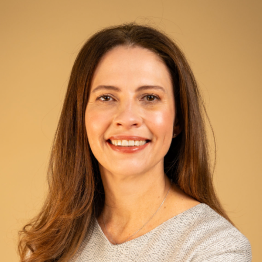As we age, one of the most common concerns we encounter is the appearance of jowls (the sagging skin along the jawline), the dreaded ‘turkey neck’ and a loss of definition around the chin and submentum.
Although a totally normal part of ageing, these changes can cause our faces to look less defined; contributing to an overall tired and older-looking appearance. Fortunately, we have Amanda on hand to offer her expert advice – offering a cutting-edge selection of tweakments and devices specifically designed to combat jowls and restore a youthful, sculpted look at our award-winning clinic. Let’s take a closer look at some of the options available.
Combination Treatments for Tailored Results
A combination approach is key in achieving effective, personalised and long-lasting results. At Amanda Azzopardi Aesthetics, we understand that no two faces are the same… which is why we typically recommend a combination approach for treating jowls; looking at your face, skin, concerns and lifestyle to determine the best course of action for you. By combining different treatments (such as dermal fillers, thread lifts, skin boosters, microneedling and RF technology) we can achieve a more comprehensive result, addressing both your skin’s structure and texture for heightened rejuvenation.
By devising a bespoke treatment plan for you, we ensure that our approach is designed to suit your unique facial structure, concerns and skin type. Amanda and her team take the time to deliver an in-depth consultation with each patient, ensuring that the chosen tweakments provide natural, subtle enhancements while delivering long-lasting results.
Dermal Fillers for Jowl Reduction & Jawline Definition
A popular and instantly noticeable treatment when it comes to sculpting and redefining jowls is the use of dermal filler. Amanda uses advanced filler placement and technique to restore lost volume in areas around the face, particularly the mid-face and jawline; shaping, rejuvenating and balancing your natural features. By injecting dermal filler into specific points along the cheekbones and jaw, we can create a lifting effect, helping to redefine the jawline and reduce the appearance of sagging jowls.
Amanda’s years’ of experience mean she is able to strategically place the filler to give natural-looking results, enhancing facial contours without creating a “done” or overfilled appearance. The procedure is quick, with minimal downtime, making it a popular choice for those looking to rejuvenate their appearance without invasive surgery.
Thread Lifts for a Non-Surgical Lift
Another highly effective tweakment for jowls is the thread lift, a non-surgical facelift alternative that has grown in popularity due to anchorage threads’ ability to lift and tighten the jawline and revitalise threads’ ability to improve the crepiness of the skin. At Amanda Azzopardi Aesthetics, we offer Definisse Revitalise Threads; placing these premium quality threads under the skin to provide an immediate tightening effect.
During your treatment, threads are inserted into key areas along the jawline and cheeks; which they gently pull the skin upwards, reducing the appearance of your jowls. As the threads dissolve over time, they stimulate collagen production… ensuring your skin becomes firmer and more youthful-looking. This dual effect means results can last up to 18 months, with noticeable improvements continuing even after the threads themselves have dissolved.
Radiofrequency Treatments
For those seeking a non-invasive option, radiofrequency (RF) treatments are another effective choice when it comes to banishing jowls, turkey necks and crepeiness. These treatments work by stimulating collagen production deep within the skin, using controlled energy to heat the deeper layers of your skin; tightening existing collagen and promoting new collagen growth. Over time, this results in firmer, more lifted skin… with a noticeable reduction in the appearance of jowls. RF treatments are ideal for individuals who want to avoid injections and downtime, while still achieving excellent results.
The Ultimate Creme De La Creme…
If you’re seeking the ultimate creme de la creme of aesthetic treatments to treat jowls, sagging skin and crepeiness, there’s two words you need to know. Ignite RF (from InMode.) This non-surgical treatment (which Amanda dubs as being one of the biggest trends set to blow up in 2025) focusses on the lower face and delivers an advanced, sculpted result… perfect if you’re not ready for surgery but wanting to get the next-best-thing. Utilising advanced radiofrequency (RF) technology, IgniteRF delivers controlled energy deep into the skin, stimulating collagen production and promoting tissue remodelling. Its targeted approach helps to lift and firm sagging skin around the jawline, reducing the appearance of jowls while simultaneously enhancing your facial contours. Over time, patients can enjoy a more defined, sculpted jawline as their skin becomes firmer and tighter.
Amanda’s Closing Thoughts…
If jowls are a concern for you, there are plenty of non-surgical options available to help restore a more defined, youthful jawline. At Amanda Azzopardi Aesthetics, our expert team is dedicated to providing safe, effective tweakments that target jowls and give you the confidence boost you deserve.
Whether you’re interested in dermal fillers, thread lifts or non-invasive skin tightening, we offer a range of solutions that can be tailored to your specific needs. Book a consultation with us today and discover how we can help you achieve a smoother, more sculpted jawline without the need for surgery.







